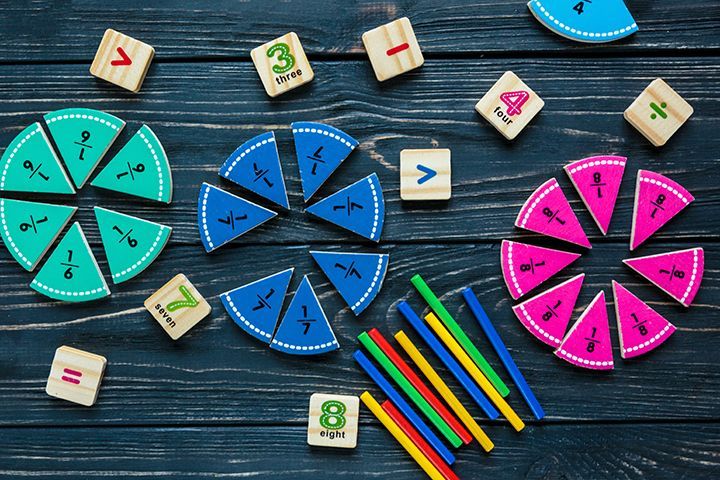by Angela McIver, PhD
When I run professional development sessions for teachers, I often ask them “What do you own?” What I really want to know is, “What skill or math content do you own as a teacher and can say - with confidence - that your children will have mastered by the time they leave your class?”

The most important thing I’ve learned as an elementary math teacher is that children need to be exposed to a concept over and over and over again before it is mastered. I often tell teachers “Decide how much time you think you will need to teach a concept and multiple that by 10. That’s how much time you actually need”. And, this is the main reason why most elementary math curricula don’t work!
When my eldest daughter was about 18 months old, she saw a video of the Disney animated film Mulan and was mesmerized. From that point on, it was the only video she wanted to watch and she saw it every Saturday until she was about 3 years old.
Mulan is based on the Chinese legend of a young woman who posed as a man in order to join the Chinese Army and fight the Huns. Disney turned this legend into an animated film for children in 1998. At the beginning of the movie, Mulan is a young girl who does not seem to fit into the traditional gender roles associated with ancient Chinese culture. When the Huns attack and the emperor drafts all men to report for military duty, Mulan runs away and secretly joins the army disguised as a man. This all happens in the first half hour of the film and the remainder of the film chronicles her adventures as a young woman attempting to keep her secret from the men with whom she is drafted.
The last time our daughter watched Mulan was a Saturday morning in the spring after her third birthday. By this point, I would say that she had seen the full length film at least fifty times (I’m being quite conservative here). As usual, she was mesmerized. But, this time, while the closing credits were rolling, I stood in the doorway and observed her. She was staring into space with her hand on her chin. She was clearly in deep thought. After a few moments of contemplation she said out loud (to no one in particular) “Mulan is a girl!” After that day, my daughter was finished with Mulan. She finally understood it and was ready for her next movie.
I call moments like the one described above “Mulan moments” and I’ve observed many of them while teaching young children elementary math. It drives home the point that children need a lot of exposure with something before it “sticks”. The most important thing I’ve learned as an elementary math teacher is that children need to be exposed to a concept over and over and over again before it is mastered. I often tell teachers “Decide how much time you think you will need to teach a concept and multiple that by 10. That’s how much time you actually need”. And, this is the main reason why most elementary math curricula don’t work!
I’ve interviewed countless children who have entered middle school with very fragile understandings of concepts that should have been mastered in elementary school. I believe this is because the most popular elementary math curricula cover too much content for students to ever master a single thing. These programs do far too much, far too quickly and do not give enough time for young children to learn content deeply. Many of these curricula are based on the belief that “spiraling” (a theory in which students are introduced to a concept that returns again and again throughout the curriculum) is an effective mechanism for building mastery. But spending one or two days on a concept before moving to another simply causes confusion. When that concept appears again in the curriculum, it is as if they had never learned it the first time.
When I run professional development sessions for teachers, I often ask them “What do you own?” What I really want to know is, “What skill or math content do you own as a teacher and can say - with confidence - that your children will have mastered by the time they leave your class?” What is surprising is that most elementary teachers cannot answer this question with a large degree of confidence. It's because math programs do not spend enough time on any concept to develop full mastery.
But, math mastery is happening in spite of elementary math programs. Through my research, I have found that students who leave elementary school with strong math foundations, do so because their parents have invested extra time and/or money to help build the foundation at home. These children succeed in spite of the elementary math curricula.
This point is driven home by a story I'd like to share of a good friend who sends his child to private school. One day he asked me what he could do for his fourth grader who was struggling with math. I suggested he send him to one of the math tutoring centers in his town. When I followed up to see how his son was doing, he told me that when he asked his son how it went, his son said “Great! All of my friends [from his elite private school] are there.” Even parents who are willing to shell out a lot of money to send their children to private school recognize that math programs in elementary school are not sufficient to build strong math students.
My daughter had another “Mulan moment” about a year after starting piano lessons when she realized that the notes on the page correlated with the keys on the piano. Up until that point things didn’t quite make sense to her, but she found a way to fake it until they did. I believe that this is happening to children all over the country when they engage with elementary math programs that don’t give enough time for things to “stick”. Make no mistake, there are no “Mulan moments" in elementary math!
#elementarymath #theproblemwithelementarymath #mathcurriculum #learningmath #dinnertablemath #everydaymath #envisionsmath #mathinfocus










